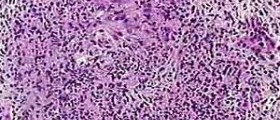
Rhabdomyolysis is a medical condition in which a tissue of a skeletal muscle breaks down rapidly as a result to damage to the muscle. The very cause of the damage may be from physical injury, or because of certain chemical or biological factors. Whatever the reason behind the rhabdomyolysis might be, it results in leakage of the breakdown products of damaged muscle cells, right into the bloodstream. Some of the products leaking from the muscle cells are hazardous enough to compromise the kidney function, and often the severity of the symptoms depends on the actual level of the muscle damage.
Signs and symptoms of rhabdomyolysis
The exact signs and symptoms of this condition depend on the level of damage to the tissues. In some milder cases, no muscle symptoms are present and the patient is typically diagnosed accidentally, when doctors notice some abnormalities in the results of blood tests. In severe cases, patients will complain about pain and tenderness of the affected muscular region. Weakness of the muscles and accompanying edema can also be present. In most severe cases, the edema grows rapidly, accumulating the fluids from the rest of the body into the site of muscle damage. This process may lead to severe consequences as the patient’s blood pressure rapidly drops. Some of the affected individuals may even experience the state of shock, which is s a serious and life-threatening medical condition defined as an inadequate perfusion of tissues, which is insufficient to meet cellular metabolic needs.
Furthermore, release of the waste materials from the damaged muscles may upset the normal levels of electrolytes and lead to nausea, confusion, vomiting, abnormal heart beats and even coma. One of the most prominent symptoms of rhabdomyolysis is dark-colored urine, resulting from the damage to the kidneys and decreased urine production.
Treatment for rhabdomyolysis
The main goal of the treatment for rhabdomyolysis is to prevent the state of shock and keep the normally functioning kidneys. In most of the cases, doctors will administer fluid therapy by intravenous fluids, which are typically saline. Saline fluids will also help to keep the electrolytes at the optimum level, and ensure sufficient circulating volume of blood, and sufficient urine production.
In most of the cases, doctors will pay special attention to the levels of electrolytes. Most commonly the electrolyte therapy includes administration of calcium to protect from cardiac complications, and insulin to redistribute potassium onto cells.
In most severe cases, where kidneys fail to maintain their normal function, doctors may recommend renal replacement therapy, which provides life-supporting treatments for renal failure: hemodialysis, peritoneal dialysis, hemofiltration, or renal transplantation.
















Your thoughts on this
Loading...